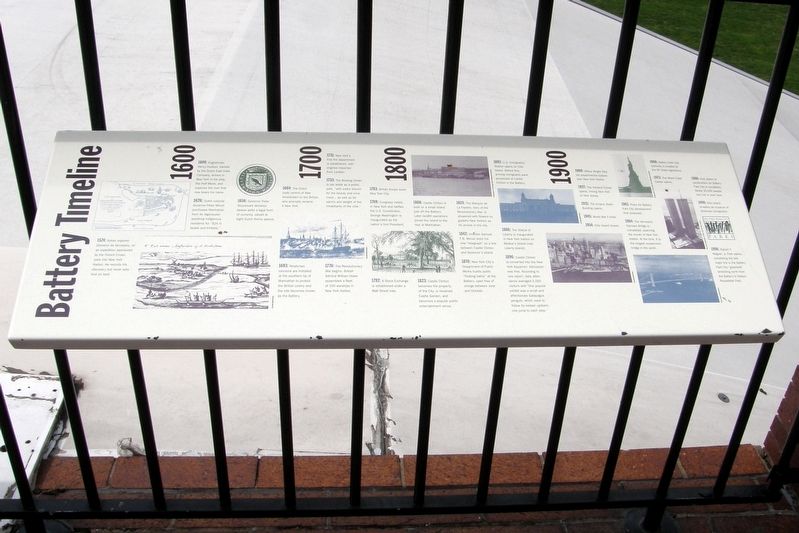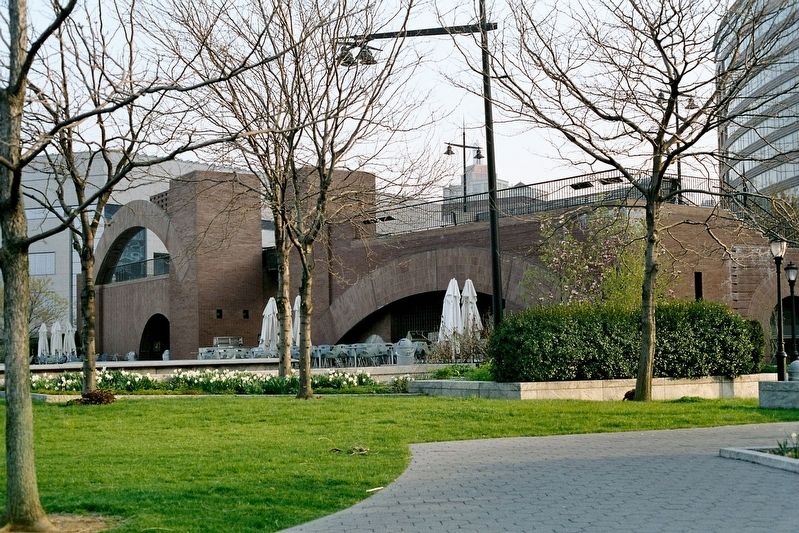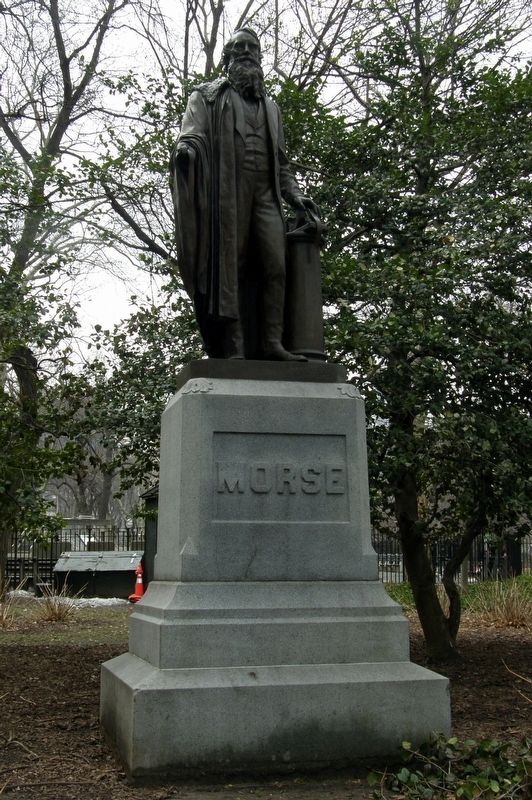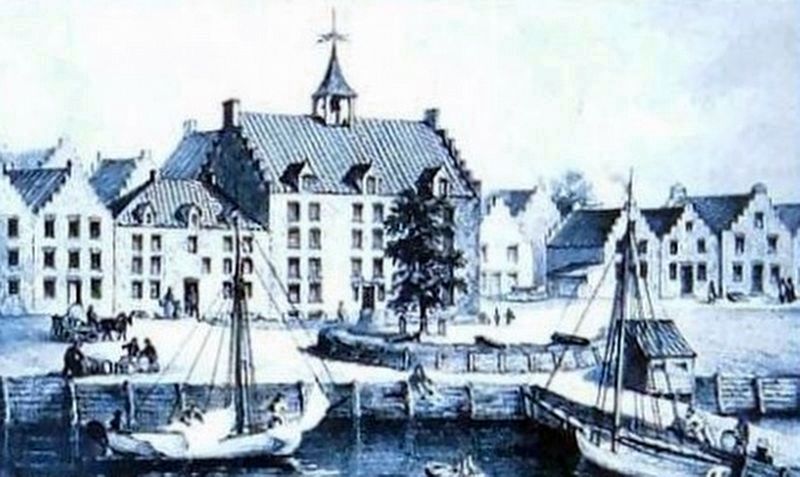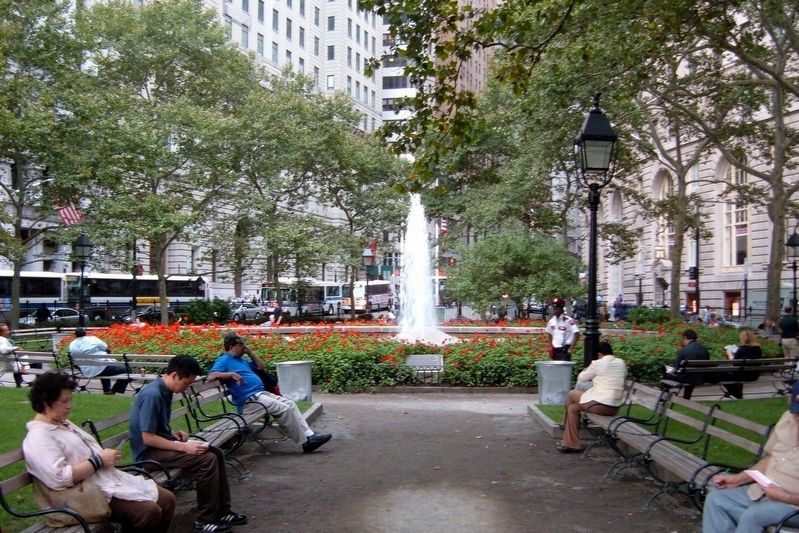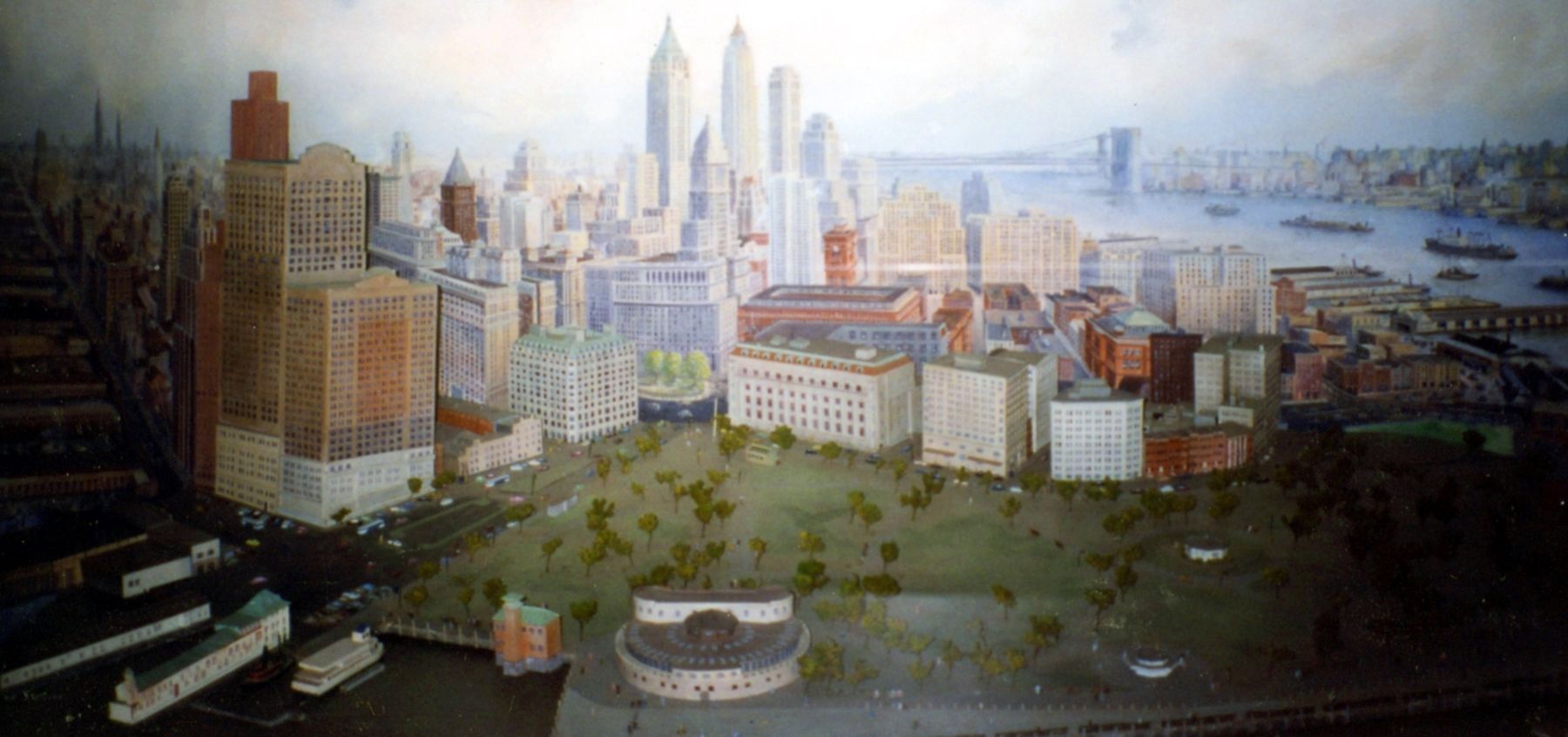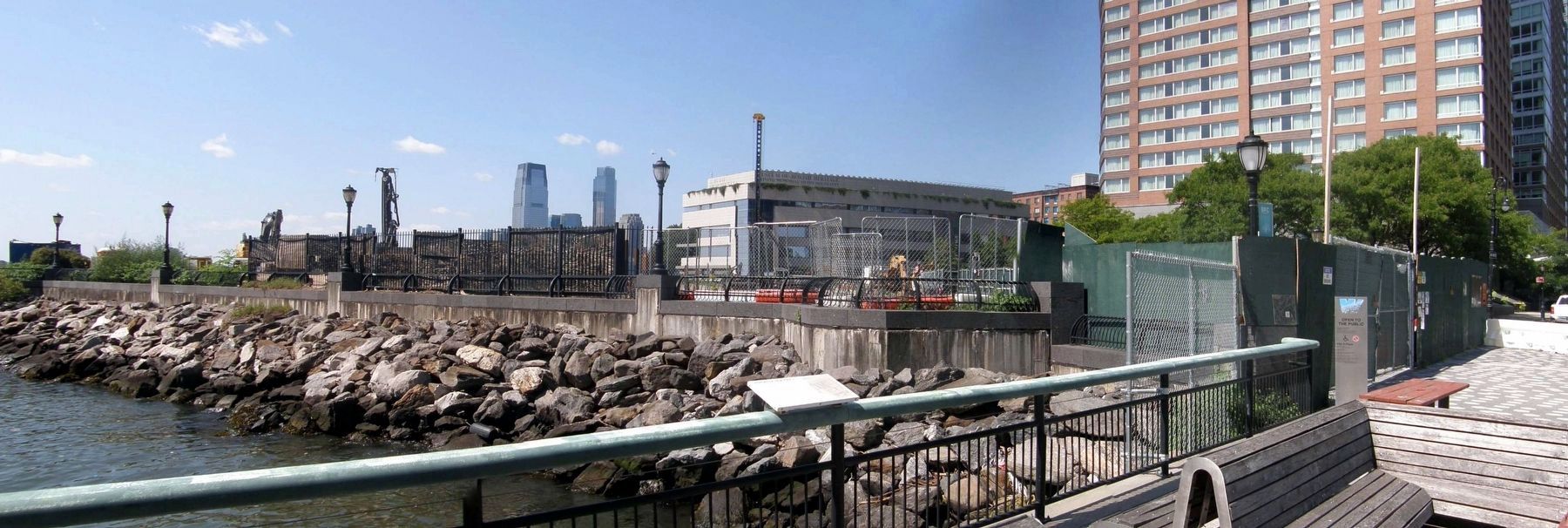Battery Park City in Manhattan in New York County, New York — The American Northeast (Mid-Atlantic)
Battery Timeline
1524: Italian explorer Giovanni da Verrazano (sic), on an expedition sponsored by the French crown, sails into New York Harbor. He records his discovery but never sets foot on land.
1600
1609: Englishman Henry Hudson, backed by the Dutch East India Company, arrives in New York in his ship, the Half Moon, and explores the river that now bears his name.
1626: Dutch colonial Governor Peter Minuit purchases Manhattan from its Algonquin speaking indigenous residents for “$24 in beads and trinkets.”
1656: Governor Peter Stuyvesant declares beaver pelts a legal form of currency, valued at eight Dutch florins apiece.
1664: The Dutch cede control of New Amsterdam to the British, who promptly rename it New York.
1693: Ninety two cannon are installed at the southern tip of Manhattan to protect the British colony and the site becomes known as the Battery.
1700
1731: New York’s first fire department is established, with engines imported from London.
1733: The Bowling Green is set aside as a public park, “with walks therein for the beauty and ornament… as well as for sports and delight of the inhabitants of the citie.”
1776: The Revolutionary War begins. British Admiral William Howe assembles a fleet of 100 warships in New York harbor.
1783: British troops leave New York City.
1789: Congress meets in New York and ratifies the U.S. Constitution. George Washington is inaugurated as the nation’s first President.
1792: A Stock Exchange is established under a Wall Street tree.
1800
1808: Castle Clinton is built on a small island just off the Battery. Later landfill operations joined the island to the rest of Manhattan.
1823: Castle Clinton becomes the property of the City, is renamed Castle Garden, and becomes a popular public entertainment venue.
1824: The Marquis de La Fayette, hero of the Revolutionary War, is showered with flowers by grateful New Yorkers as he arrives in the city.
1842: Inventor Samuel F.B. Morse tests his new “telegraph” on a line between Castle Clinton and Governor’s Island.
1870: New York City’s Department of Public Works builds public “floating baths” at the Battery, open free of charge between June and October.
1892: U.S. Immigration Station opens on Ellis Island. before this, arriving immigrants were processed at Castle Clinton in the Battery.
1886: The Statue of Liberty is inaugurated in New York Harbor on Bedloe’s Island (now Liberty island).
1896: Castle Clinton is converted into the New York Aquarium. Admission was free. According to one report, daily attendance averaged 5,000 visitors and “One popular exhibit was a small and affectionate Galapagos penguin, which used to follow its keeper upstairs,
one jump to each step."
1900
1909: Wilbur Wright flies his experimental triplane over New York Harbor.
1927: The Holland Tunnel opens, linking New York to New Jersey.
1931: The Empire State Building opens.
1945: World War II ends.
1954: Ellis Island closes.
1961: Plans for Battery Park City development first posted.
1964: The Verrazano(sic) Narrows Bridge is completed, spanning the mouth of New York Harbor. At the time, it is the longest suspension bridge in the world.
1968: Battery Park City Authority is created by the NY State legislature.
1973: The World Trade Center opens.
1988: First phase of construction for Battery Park City is completed. Nearly 35,000 people now work there.
1990: Ellis Island re-opens as museum of American immigration.
1996: Robert F. Wagner, Jr. Park opens, completing the last major link in the Battery Park City “greenbelt” stretching north from the Battery to Nelson Rockefeller Park.
Erected by Battery Park City Parks.
Topics. This historical marker is listed in this topic list: Notable Events. A significant historical year for this entry is 1524.
Location. Marker has been permanently removed. It was located near 40° 42.313′ N, 74° 1.107′ W. Marker was in Manhattan
, New York, in New York County. It was in Battery Park City. Marker could be reached from Battery Place near Robert F. Wagner Jr. Park, on the right when traveling south. The marker was one of four atop the viewing platform of the Robert J. Wagner Jr. Park pavilion. Touch for map. Marker was in this post office area: New York NY 10280, United States of America.
We have been informed that this sign or monument is no longer there and will not be replaced. This page is an archival view of what was.
Other nearby markers. At least 8 other markers are within walking distance of this location. History of New Pier 1 (about 300 feet away, measured in a direct line); History of Pier A (about 400 feet away); American Merchant Mariners' Memorial (about 500 feet away); a different marker also named American Merchant Mariners' Memorial (about 500 feet away); Mother Cabrini (1850-1917) (about 500 feet away); New York Korean War Veterans Memorial (about 600 feet away); a different marker also named New York Korean War Veterans Memorial (about 600 feet away); Battery Park City Employees Memorial (about 600 feet away). Touch for a list and map of all markers in Manhattan.
More about this marker. The entire park, including the pavilion, has been demolished as part of a global warming resiliency project.
Also see . . . A Plan to Save a Beloved Park From Flooding Has Angered Its Biggest Fans. New York Tines, October 21, 2022 (Submitted on September 11, 2023, by Larry Gertner of New York, New York.)
Credits. This page was last revised on September 11, 2023. It was originally submitted on May 23, 2019, by Larry Gertner of New York, New York. This page has been viewed 295 times since then and 21 times this year. Photos: 1, 2, 3, 4, 5, 6. submitted on May 23, 2019, by Larry Gertner of New York, New York. 7. submitted on September 11, 2023, by Larry Gertner of New York, New York. • Andrew Ruppenstein was the editor who published this page.
